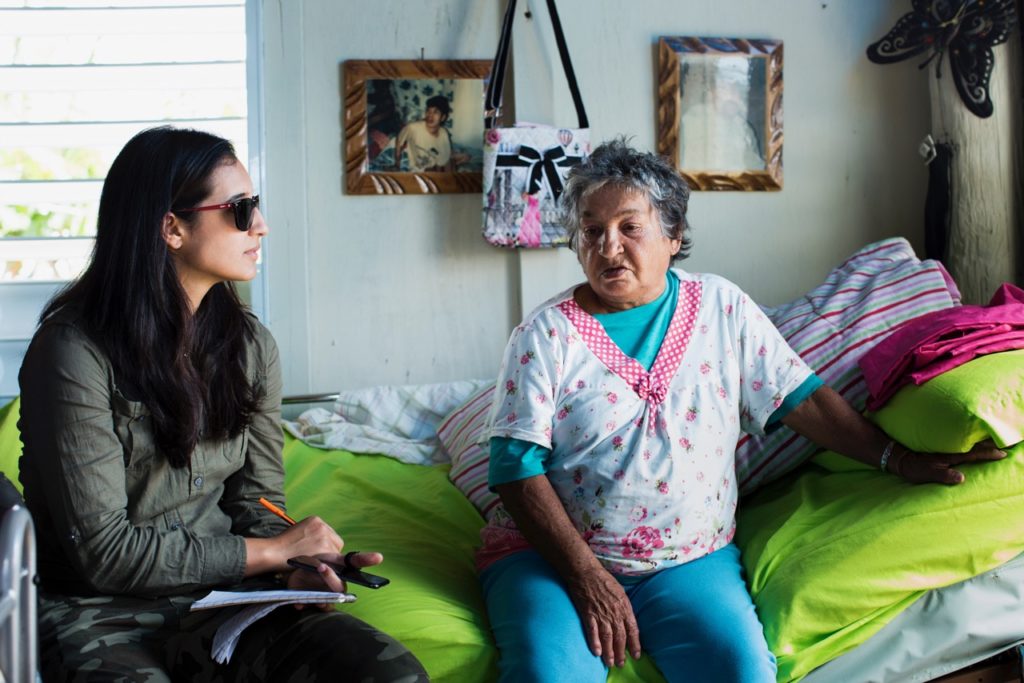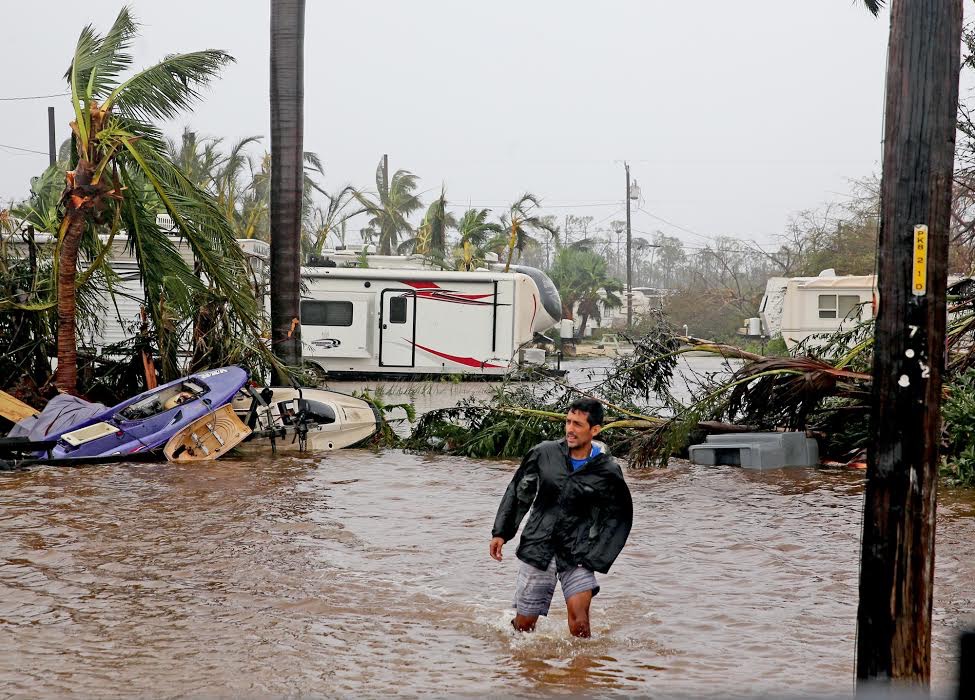Latino journalists covering natural disasters juggle danger, family worries, pressing deadlines
When Arelis Hernández landed in Puerto Rico after Hurricane María swept across the island, she knew the drill — talk to officials, find the emergency response centers, get people’s stories.
But even a week after the storm, Puerto Rico remained dismantled, with no power, water or working communications.
“It was really difficult to see who was in charge, know how to get around to the parts of the island where people were setting up,” said Hernández, a Washington Post reporter who normally covers Maryland politics. “I’m used to having government officials respond in a timely way to my questions and my inquiries about certain things. That didn’t happen in Puerto Rico.”
María wasn’t her first hurricane.
Hernández had just been in Houston, reporting on the massive flooding Hurricane Harvey caused just a month before. A year prior to that, she followed Hurricane Matthew up the east coast from Florida to North Carolina.

“Houston was a rain event, a massive event with lots of water lots of flooding, and that was the bulk of the damage,” she said. “Puerto Rico was every kind of damage.”
Yet finding facts wasn’t Hernández’s biggest challenge in the island. Although she grew up in the suburbs of Washington D.C., she spent summers and other breaks from school in Puerto Rico with family and friends who live there.
The landscape she saw while looking out the airplane window was heartbreaking — roofless homes, collapsed structures and blocked roads by fallen trees.
“A tropical island is everything you think it is — lush a lot of green, water, lots of vegetation, lots of life,” she said. “Puerto Rico was just not that.”
Her first thoughts went to her family in Río Grande, a municipality 20 miles west of San Juan. Her suitcase was packed with relief supplies for them. When she had breaks from work, she bought them mattresses.
“They were sleeping on the floor which is not as bad as some other people, some of the hardships that other people are facing,” she said. “But it was my family, right? And I was in a position where I could help.”
Hernandez, like other reporters covering natural disasters, was working under extreme circumstances, constantly filling stories with unsteady communications.
Hurricane Harvey made landfall in the U.S. last summer and became the wettest tropical cyclone on record, causing extreme flooding in East Texas. In the Houston region, more than 100,000 homes were damaged and thousands of residents displaced. As the rain ceased in Texas, Hurricane Irma, a category 5 that had shattered the Caribbean, tore along the coasts of Florida. Two weeks later, Hurricane María caused the largest blackout in U.S. history.
The 2017 Atlantic hurricane season, dubbed by the National Oceanic and Atmospheric Association as “extremely active,” was devastating: Harvey is tied with Hurricane Katrina in 2005 as the costliest tropical cyclone; damages amounted to $175 billion. Maria’s winds were so strong Puerto Rico’s electric grid collapsed, and more than 10 months later, the island is still going through a tedious recovery.
David Ovalle, a crime and courts reporter for the Miami Herald, had a satellite phone as he covered Hurricane Irma from the Florida Keys. But it wasn’t helpful when communications were down.
Irma’s unpredictable course made it unique, said Ovalle, who’s covered 17 hurricane seasons in South Florida.
“I think what made so much different here was that it mushroomed up to such crazy intensity while it was still in the Caribbean,” he said “Everyone was fearing the worst.”
His editors were going to send him to 22nd floor of a high-rise in downtown Miami, where the eye of the Category 5 hurricane was supposed to hit.
But in a matter of days, he was deployed to the Keys, where he documented the storm from an art gallery that used to be a stonemason lodge. Newscasts the night before suggested the Keys would be obliterated.
Ovalle and the other reporters had a plan, If the gales bursted the windows, they’d hide in the staircase.
“It was a pretty scary moment when the wind would kick up, and it would [make] a howling sound like a freight train coming over your roof,” said Ovalle “But you had just been through so many of them, it’s sort of an adrenaline rush.”.
Just hours after the worst passed, almost everything went back to normal.
“It was kind of surreal because we’re sitting in the lobby watching the scene watching the trees across across the street. Trees are bending over in the rain,” he said. “Suddenly people are walking their dogs.”
A few days after Ovalle and a photographer from the paper were back in the newsroom with stories to file.
“People were clapping and cheering when we got back,” he said. “We needed to get back to work.”

As the storm made its way up Florida, the Tampa Bay Times also assigned reporters all over the west coast of the state to cover it.
Maria Carrillo, the paper’s enterprise editor, said the Times relocated its newsroom to a safer location with fewer windows. Mattresses, water and other supplies were brought in for the teams working on coverage, and the newspaper management asked a hurricane preparedness specialist to address the staff on safety concerns a few days before the storm hit.
Carrillo has covered hurricanes in St. Pete and in Virginia, but she spent Hurricane Irma hunkered down in the impromptu newsroom, coordinating coverage with other editors.
Communications didn’t stop during the hurricane, and Carrillo said she was grateful for new technological tools like Slack that allow journalists to stay in constant contact.
“We had a channel where we would say ‘OK here is where we need you guys to go drop your anecdotes,’” she said. “And then someone on the backend would grab and then weave in together the little stories.”
Carrillo believes technology and preparation make hurricane coverage successful, but planning is just as critical.
“You pace yourself, you gotta pace the room,” she said. “It’s going to be coverage for days and days and days.”
Email: latinoreporter@gmail.com
Twitter: @vizcainomariae